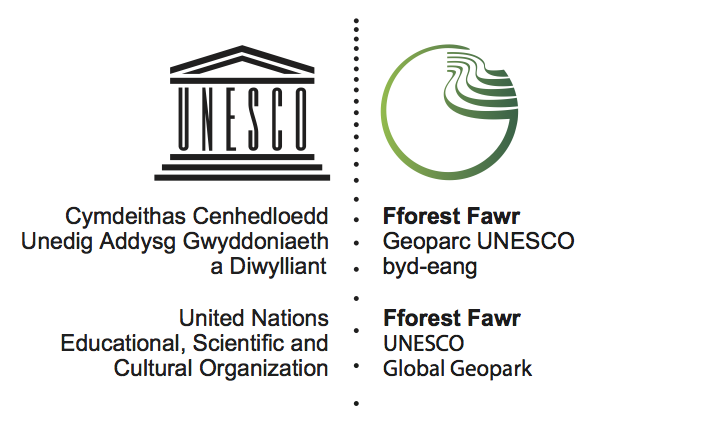Landscape and industry are intimately linked throughout the valley of the Tawe.
The headwaters of the Tawe – Blaentawe – rise at around 550m/1850ft to the east of Fan Brycheiniog in the Black Mountain. Joined by the waters flowing from Llyn y Fan Fawr the growing Tawe cascades over southerly dipping slabs of Old Red Sandstone into Glyntawe. Here it is joined by the Afon Haffes and the waters emerging from the Dan yr Ogof cave systems beneath the Black Mountain.
The geological weakness known as the Cribarth Disturbance crosses the river near Craig-y-nos Country Park and the tightly faulted and folded Carboniferous Limestone here throws up steep buttresses either side of the river; Cribarth and Craig-y-nos to the west and Craig-y-Rhiwarth to the east.
Travelling downstream, the waters of the Byfre Fechan are discharged into the Tawe at Rhongyr Uchaf, having passed through Britain’s deepest cave system – Ogof Ffynnon Ddu.
Passing by Pen-y-cae and Ynyswen, Abercraf and Cae’r-Lan, it leaves the Geopark just north of Ystradgynlais. Its lower course takes it down the Swansea valley to the sea at Swansea Bay.
Key tributaries of the Tawe include the Afon Giedd and Nant Llech, the latter having tumbled over Henrhyd Falls earlier in its course.
Nant Llech
The jewel in Coelbren’s crown.
The Nant Llech Isaf and the Nant Llech Pellaf combine at Blaen-Llech to form the Nant Llech (English: ‘rock-slab stream’). In its short dash to join the Afon Tawe near Ynyswen it leaps over the Farewell Rock to provide the highest waterfall (30m/90ft) in Fforest Fawr Geopark and indeed one of the highest in South Wales.
The Henrhyd Falls occur where this band of resistant sandstone is faulted against easily eroded mudstones. The site is now owned and managed by the National Trust.
A path follows the river for the rest of its course down a delightful wooded gorge to Llech Bridge and its confluence with the Afon Tawe.
Afon Giedd
Two rivers for the price of one!
The upper Afon Giedd drains the western slopes of Fan Hir, its source just south of Bwlch Giedd which divides Fan Hir from Fan Brycheiniog. The river then flows south to enter a section of valley cut through the Carboniferous Limestone outcrop which is often dry. In wetter weather the waters finally enter the ground at three or four spots at Sinc y Giedd / Sinc Giedd.
It was once thought that they re-emerged further down the Giedd valley but it is now known that they make their way south-eastwards to emerge at Dan-yr-Ogof.
The lower Afon Giedd occupies the same valley as the upper Giedd but is not hydrologically connected with it. The river is joined by the Nant Cyw and then shortly joins the Afon Tawe at Ystradgynlais.
Virtually the entire length of the river can be followed by road, track or access land – though certain sections are difficult of access and best skirted around.
Afon Twrch
Boar and border
The Twrch rises high on the Black Mountain. In fact its headwater streams reach to around 2500ft / 760m on the western slopes of Fan Brycheiniog. Some of these streams have been captured by the headwaters of the Afon Sychlwch in relatively recent times, their waters now flowing into Llyn y Fan Fach then on down the Sawdde to the Towy instead.
The Afon Twrch forms the ancient boundary between Carmarthenshire and Brecknockshire (now Powys) from Fan Foel down to Ystradowen.
The name (English: ‘boar river’) may originate from the supposed ‘snouting’ action of its waters in their steep descent from the heights of the Black Mountain to their confluence with the Afon Tawe at Ystalyfera.


